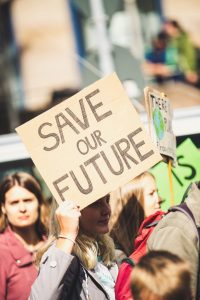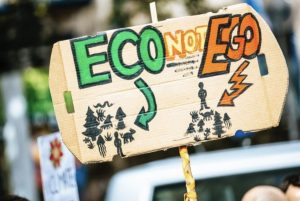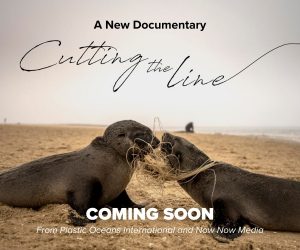“Climate change is a man-made problem with a feminist solution.”
– Mary Robinson (first female president of Ireland)
Today, March 8th, we celebrate International Women’s Day (a.k.a. IWD), a celebration born from the labour movement, which was first honored in 1911 in only a few European countries.
It was made official in 1975, when the UN started commemorating it, adopting its first slogan: “Celebrating the past, Planning the future”. It’s important we take this quote into consideration, as most of the time we’re prone to thinking of feminism and environmentalism as two isolated struggles. But think again!
 These two share more than we realize, and we cannot win one fight without taking the other one on.
These two share more than we realize, and we cannot win one fight without taking the other one on.
This is how a new concept was born – Ecofeminism. This term emerged as a merger between the feminist and ecological movement, both of them founded by a similar connection to suppression: environmental degradation and oppression of women. These two share a common root: the male driven-capitalist power structure.
The organization’s structure has resulted in a binary world that separates man from woman and human from nature; which in turn results in a world where women have been subdued and nature used at man’s convenience.
Hence, women and the environment are substantially intertwined, and to solve climate change it highly depends on ensuring feminist solutions on the social, economic and political aspect.
Now you may be wondering, how can this be demonstrated to be true?
It has been documented that climate change repercussions affect more women – especially those stricken by poverty – than it does men.
The agriculture, water and security sectors, are just a few more examples of the areas where effects, directly from environmental changes and threats, can be felt on this population. Women happen to be the ones who depend more on these kinds of resources.
And so, just as natural disasters happen, without any human intervention (droughts, big storms, earthquakes) they bring unemployment, having a straight impact on women from middle and lower classes by raising the risk of violence, sexual exploitation and trafficking. So too do pollution-related crises have similar consequences.

As they are not valued enough to have “proper” jobs, they work by gathering garbage to sell, constantly breathing in all the toxins released from plastics and other harmful materials. And this, as we mentioned before, increases the levels of violence, as men try to avoid landfills as working places, making the traffic and abuse of women a profitable, long-lasting job.
Sadly this is only one part in the multi-tiered problem women face. The myriad of problems range from the fact that women represent only 30% of all scientific researchers around the world, who are essential parts of the work on climate change and other environmental threats we are constantly facing, all the way to how these issues cause mass migrations which many times turn into refugee situations, which themselves trample the ecological balance and human rights along the way.
So, it becomes clear that fixing the gender gap and working together, alongside each other as equals, is the only road to actually solving climate change, biodiversity loss, plastic pollution and all other environmental crises. What better day to discuss this than today … International Women’s Day.
Susana Argüelles is a project manager for Plastic Oceans Mexico.

